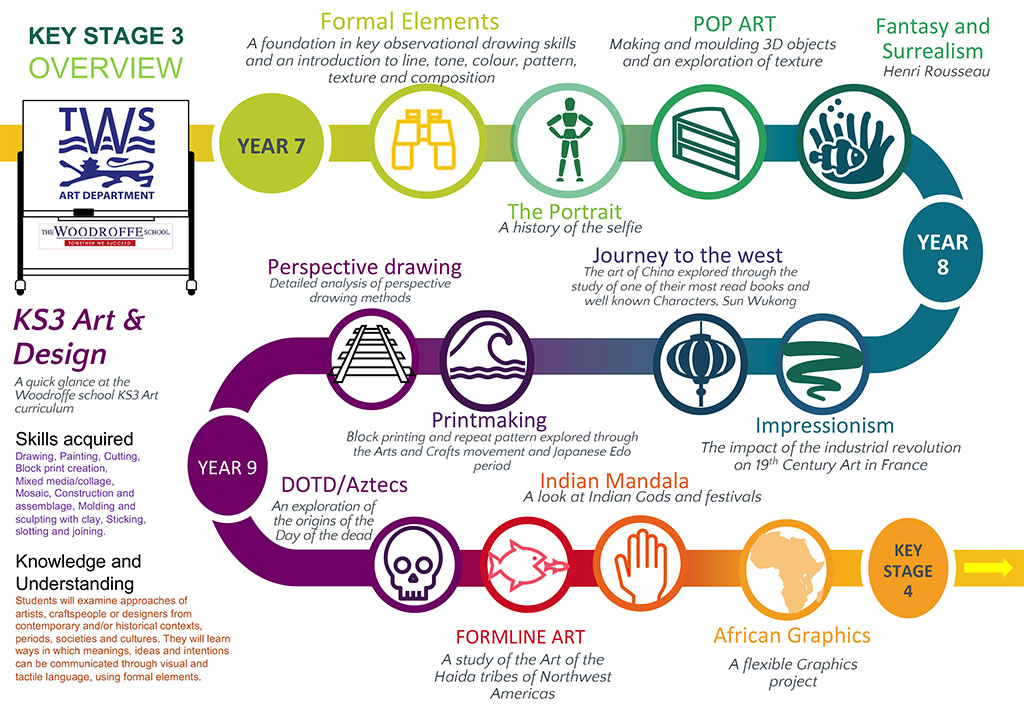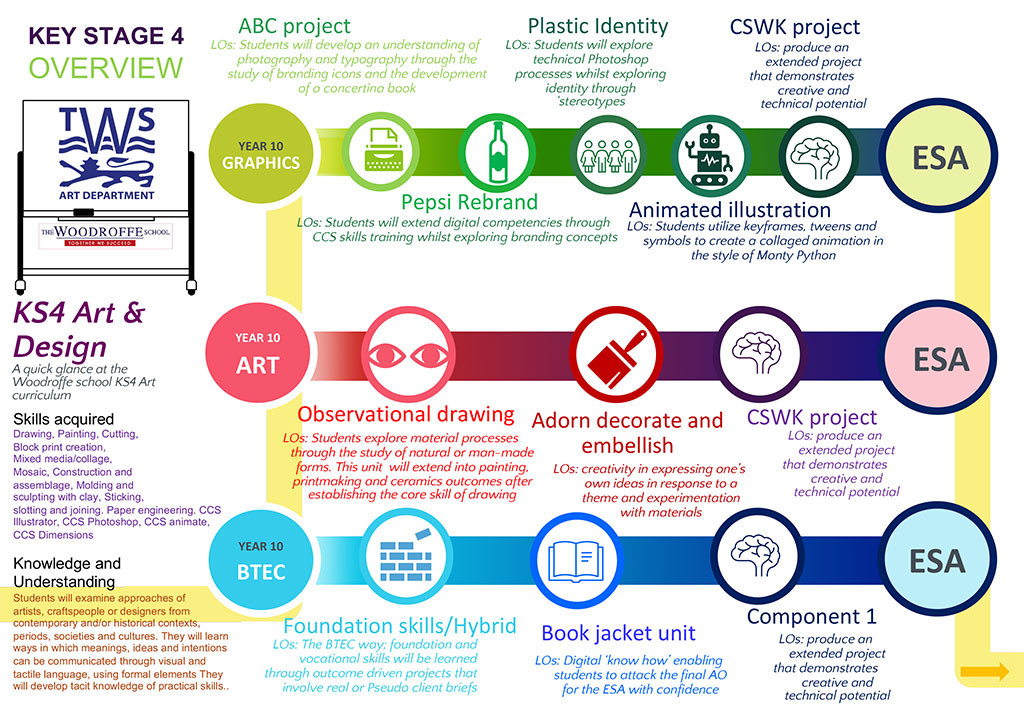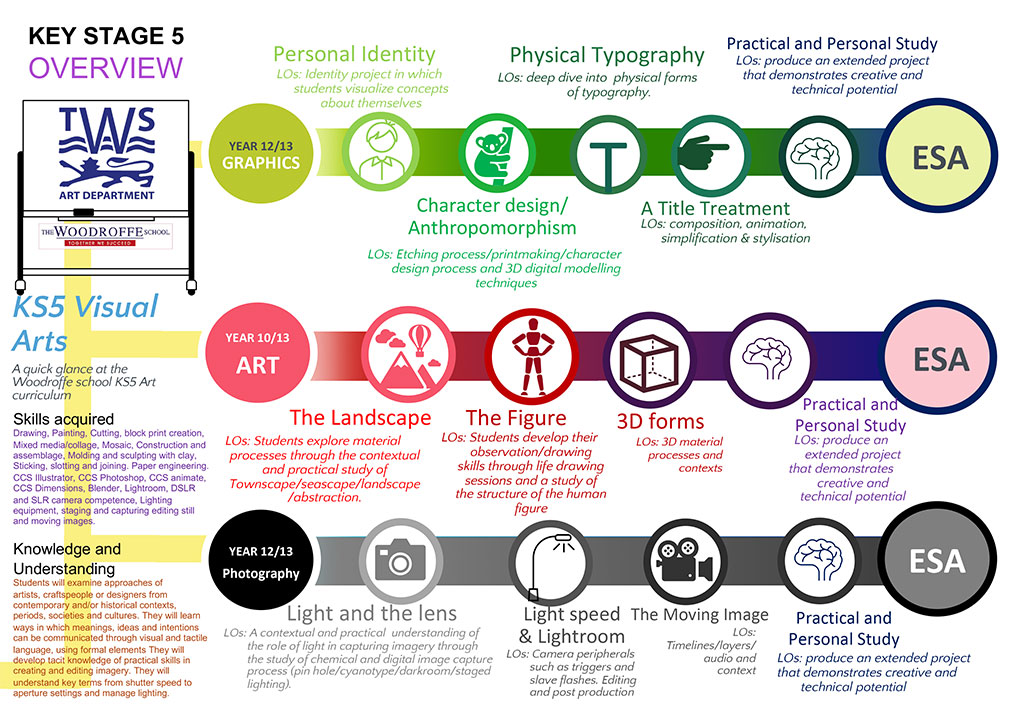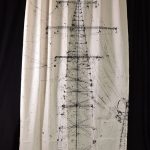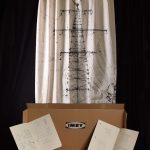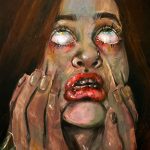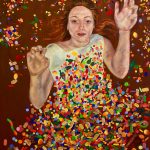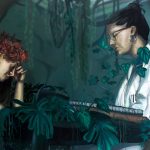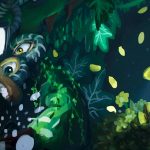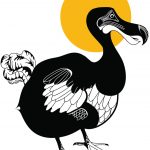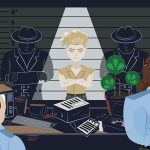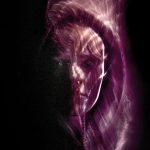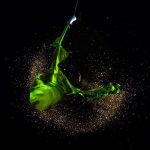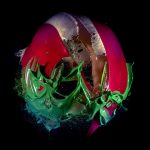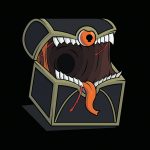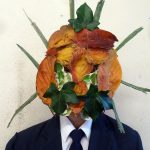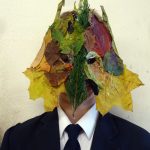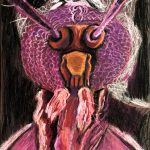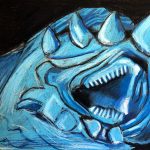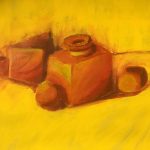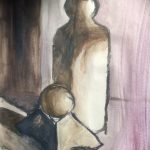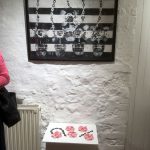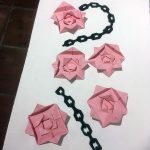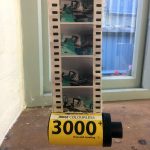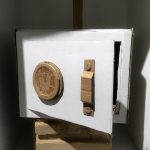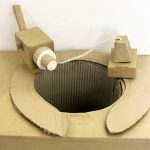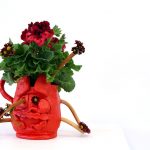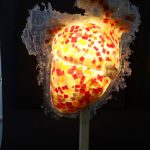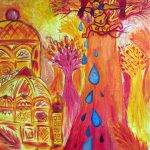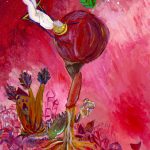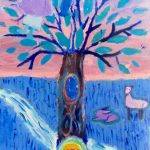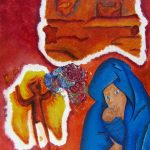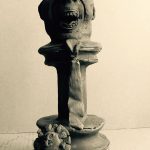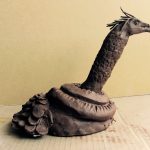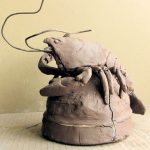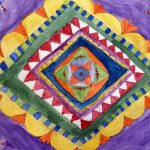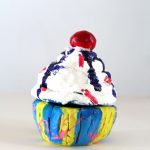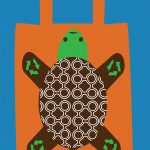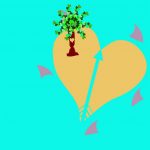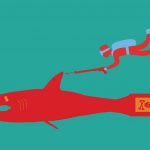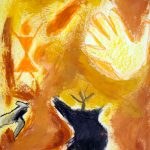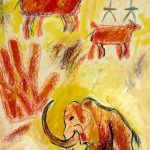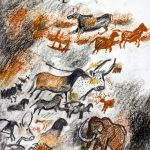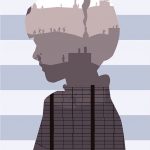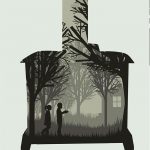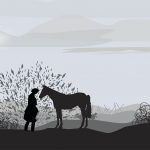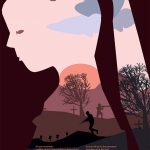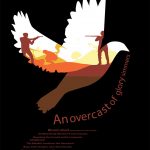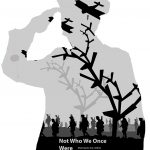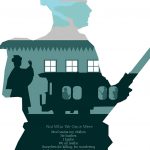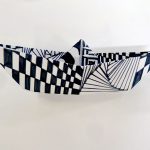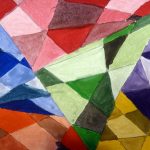Art
Art and Design education at Woodroffe is designed to build the confidence and creativity of the individual, nurturing their understanding of theoretical and practical artistic study.
It is heavily shaped by the thinking of educationalist Sir Ken Robinson in that we are trying to help students find their passion by creating an engaging, enjoyable and balanced learning experience.
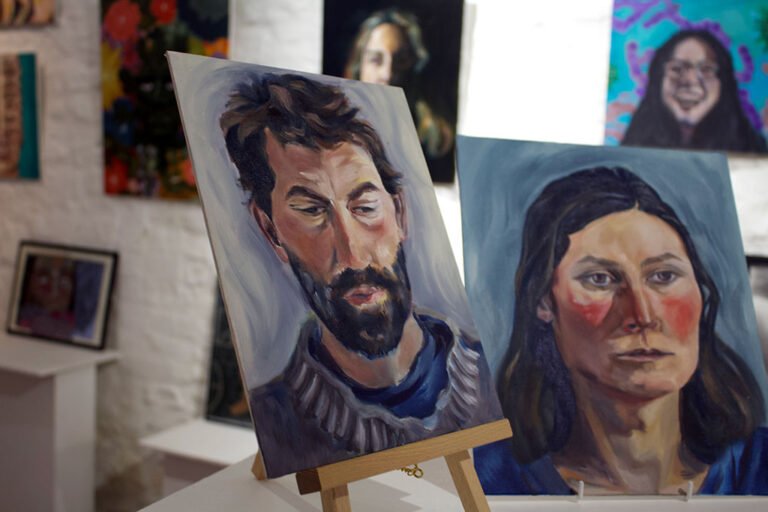
Art and Design education at Woodroffe is designed to build the confidence and creativity of the individual, nurturing their understanding of theoretical and practical artistic study. It is heavily shaped by the thinking of educationalist Sir Ken Robinson in that we are trying to help students find their passion by creating an engaging, enjoyable and balanced learning experience. We aspire to build the technical knowledge of the pupil and nurture individual passion along with appreciation and understanding of creative global historical context.
Through a variety of practical, appropriate skills-based learning opportunities throughout the key stages, pupils develop their technical and creative skills learning about the Art history through the varied topics studied. Practical skills are developed through units of work that that allow our students to play with processes and learn how to do things through personal experience. We use our printmaking facilities, etching presses, fully equipped Mac suite with Adobe Creative Cloud, specialist ceramics space with kilns, darkroom and access to a range of DT tools to create the arena in which students can enjoy learning new skills. Whilst drawing and painting is at the heart of our curriculum, the department prepares students for advanced learning in the subject area by introducing specialist teaching in Art, Graphics and Photography at appropriate stages in their learning.
An understanding of creative mechanics is built from Year 7, wherein the pupils are taught projects based upon understanding and fluency with the artistic formal elements. They engage with a variety of mediums and techniques, with focus on Op Art, Pop Art and Portraiture. This develops into a focus upon cultural Art History in Year 8, wherein they integrate learned knowledge with a focus on specific craft (Japanese print-making, Impressionist painting). A contemporary insight into the creative language is developed in Year 9, where pupils learn how the modern, digital and graphic-based artworks have developed from historic techniques. In Year 9 we begin to teach students how to use more advanced digital technology to generate Artwork so that student choice about specialist pathways at KS4 is an informed one based on experience. In KS4 the students follow GCSE and BTEC courses that challenge students by demanding greater proficiency in the core skills for which our students have been well prepared. This is extended further at A level where project plans become more open and students need to access prior learning processes in a tacit manner so that they can generate independently conceived ideas.
The curriculum encourages an appreciation of critical thinking and specialist skills that support learning across all subject areas. Our students will think creatively and have a growing confidence in voicing their opinions, both in terms of concrete or more abstract thinking. The technical knowledge that they acquire and build on year on year will prepare them to generate impressive A level portfolios that will lead to both good grades and successful university interviews. By KS5 the focus on research and written analysis that permeates the key stages allows students to generate well researched personal studies that support their practical work. We hope to see emerging independence in our students enabling them to think creatively and produce personal, meaningful outcomes for practical and written tasks.
Year 7
Students follow a broad Art and Design curriculum involving drawing, painting, designing and making, contextual studies and analytical thinking.
Year 8
Year 8 students continue to study Art and Design broadly looking first at Russian design icons through the history of the Tsars and artwork like the Imperial Faberge eggs. They look at the origins of the print press and the impact it had on western society and also the role that Japanese printmaking had on western Art in the 19th Century, exploring the techniques used in practical printmaking tasks. Impressionism is studied in Year 8 and compliments the French department’s visit to Giverny where students will encounter both Monet’s artwork and also his collection of Japanese prints by Artists like Hiroshige and Hokusai.
Year 9
In Year 9 we explore global culture and the visual language that is born out of belief systems. This trip around the world covers four continents and explores South American, Native American, African, and Indian arts styles. Students consider the similarities and differences between the visual approaches of various cultures and connect the underlying spiritual beliefs. This builds on the students understanding of the very technical elements studied in year eight and includes more refined 3D work in advance of GCSE courses. Click here for more information.
Arts Award
The Silver Arts Award is a level 2 qualification that aims to enable learners to understand how to develop their own arts practice and arts leadership skills, underpinned by knowledge of their own art form and its relationship to arts provision in the community.
Students will demonstrate their artistic imagination in an art form of their own choice and their ability to generate appropriate responses to challenges. Learners do this by exploring opportunities to extend their own knowledge of, and interests in, the arts and develop their art form skills through planning, implementing, and reviewing a personal arts challenge appropriate to their understanding and ability.
Students review arts events and find out more about the arts through meeting and working with arts practitioners, researching arts organisations, and exploring future education and career pathways. They reflect on what they have learnt and how this may influence their future choices. They also work under professional supervision to develop specific personalised leadership skills through taking the lead in planning, delivering, and reviewing an arts project. They create a personal arts portfolio evidencing their experiences in a format of their choice.
Years 10 & 11
Students will to decide to do either Art or Graphics. Both GCSE’s work in the same way in that they are 60% coursework and 40% exam. The assessment objectives are identical and the course structure is the same. We run an annual KS4 trip to London and other Art visits and projects when time/funding allows. In our KS4 curriculum we are trying to nurture more independence of thought from our students.
Both Art and Graphics have drawing and design at their core but in Graphics the emphasis is on digital skills, like Photography or animation, where as in Art the emphasis is on the tactile, like ceramics and painting. In both instances we go into more detail in terms of techniques and materials and present more open ended projects where students are encouraged to develop their own ideas in response to simple, often one-word, questions.
Years 12 & 13
Students who have passed a GCSE in Art or Graphics at ‘B’ grade are automatically eligible to proceed into KS5 Art, Graphics or Photography. C grade passes at GCSE are considered for sixth form Art courses depending on other results. Art is an essential subject to study if you intend to go into the highly profitable art industries as a career.
“Accounting for 1.7m jobs, contributing 5% of gross value added (GVA) to UK GDP and exporting £17.3bn annually (9% of total service exports), the creative sector outperforms the rest of the UK economy in both growth and job creation.”
Source: The Guardian
In the Sixth Form students on any one of the Art courses are eligible for the educational visits. Every other year we propose an international visit and as an addition we do a domestic excursion (this year was St. Ives). All three courses are designed to be a great foundation for further study in the Arts and to equip our students with the technique, material and conceptual understanding necessary to comfortably make the jump to university courses or the workplace.
Creative Careers – Find your perfect role in the creative industries

